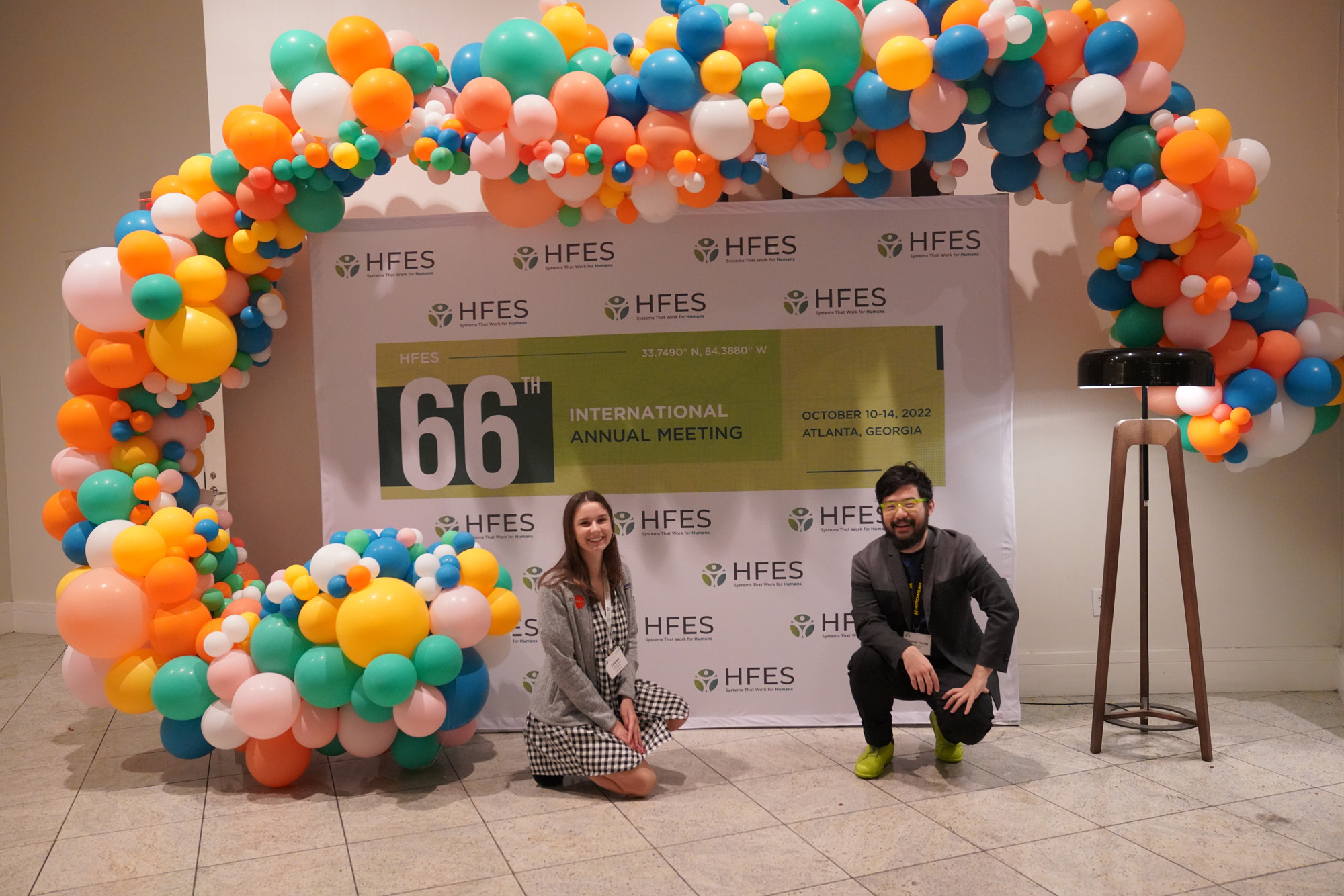Lauren Cerino and Sheng-Hung Lee Present at Human Factors and Ergonomics Society Meeting
by Adam Felts
AgeLab researchers Lauren Cerino and Sheng-Hung Lee gave presentations on the connected home and human-centered design at the 66th International Annual Meeting of the Human Factors and Ergonomics Society (HFES) in Atlanta, Georgia. The annual meeting brings together thousands of attendees from education, government, and industry for presentations and conversation on the intersection between human behavior and technological design.
At HFES, Ms. Cerino described a study on connected home technology led by researchers who make up the AgeLab’s C3 Connected Home Logistics Consortium. The researchers developed a simple prototype of a smart home system, along with an interface that communicates readings from the system – including data like air quality, in-home activity, and temperature – to the user. The prototype is intended to be used to study how users inteact with connected home technologies, and how exposure to such technologies may impact their willingness to adopt and use them in the future.
For the study, 14 research participants self-installed the prototype in their homes and used it for three weeks. Prior to exposure to the smart home prototype, they were also asked about their willingness to use connected home technologies for different tasks, including financial management, providing care, shopping from home, doing schoolwork, preparing meals, and more.
After using the prototype for three weeks, the participants were asked questions about their ease of installation and use of the technology, and how useful they perceived the technology to be. Additionally, participants were queried again about their willingness to use connected home tech across various tasks. Post-exposure to the technology, the participants expressed significantly more willingness to employ it across many different domains, especially financial management, shopping from home, and providing care.
Despite relatively low usefulness ratings for the prototype among participants, exposure to the prototype led to reports of greater willingness to integrate new technologies into everyday life. Providing potential users with increased exposure, opportunities to experience possible applications, and demonstrating ease of use may be key to driving future adoption of this new wave of products.
Mr. Lee presented on his Master’s thesis for MIT’s IDM program, which utilized human-centered design principles to investigate older adults’ preferences for indoor footwear and to design an experimental ‘smart slipper’ based on his findings. Survey research on older adults’ indoor footwear choices were coupled with interviews and focus groups with members of the AgeLab’s 85+ Lifestyle Leaders panel.
The interviews uncovered a strong degree of desire among the participants for indoor footwear that was attractive, usable, and comfortable. One interviewee said, “The most important thing is comfort and safety, but I would appreciate it if you design something beautiful. Can you make a beautiful, sexy shoe that is also comfortable?” Another participant said, “If the footwear is comfortable, I will give you my money and tell all my friends” – suggesting significant demand from older adults for footwear that meets their particular wants and needs.

